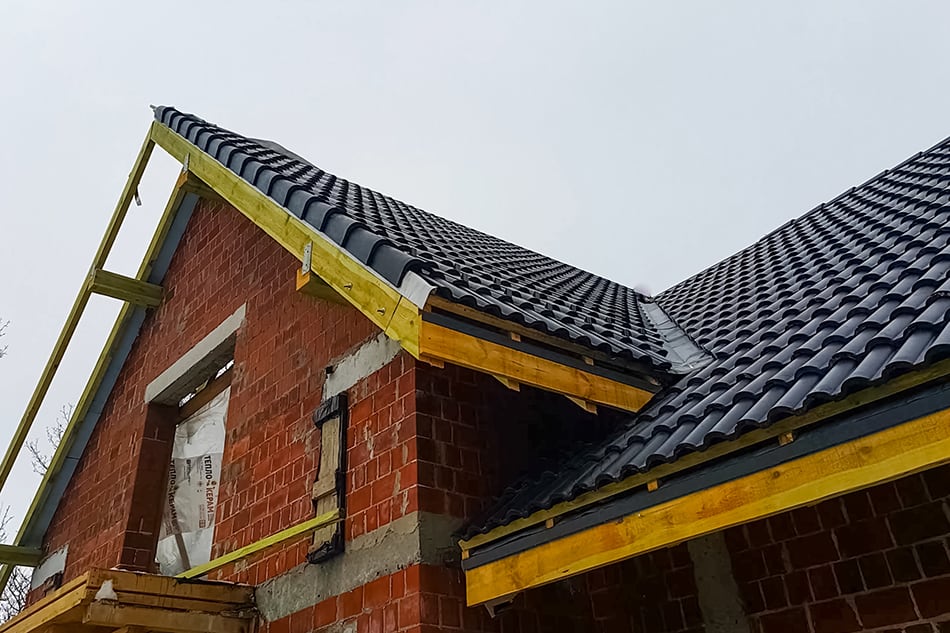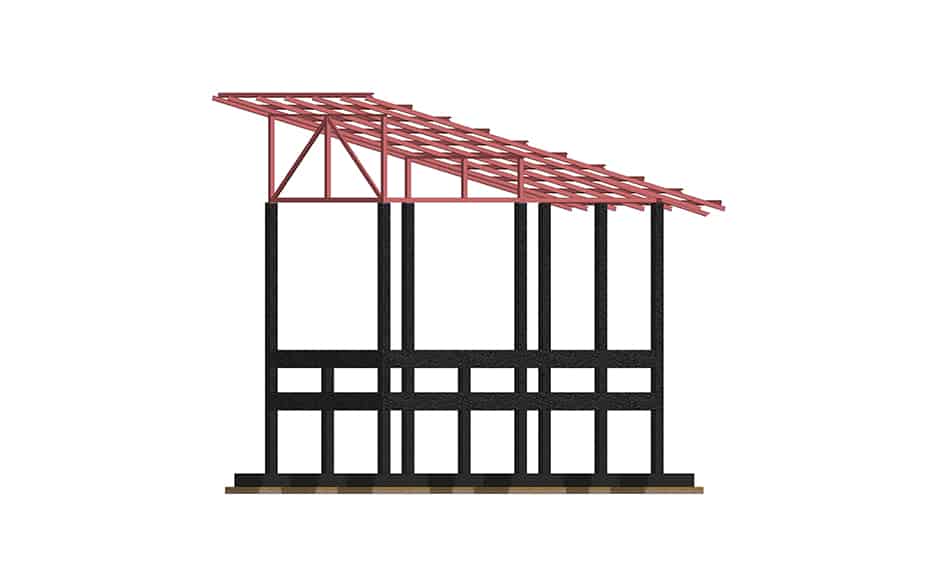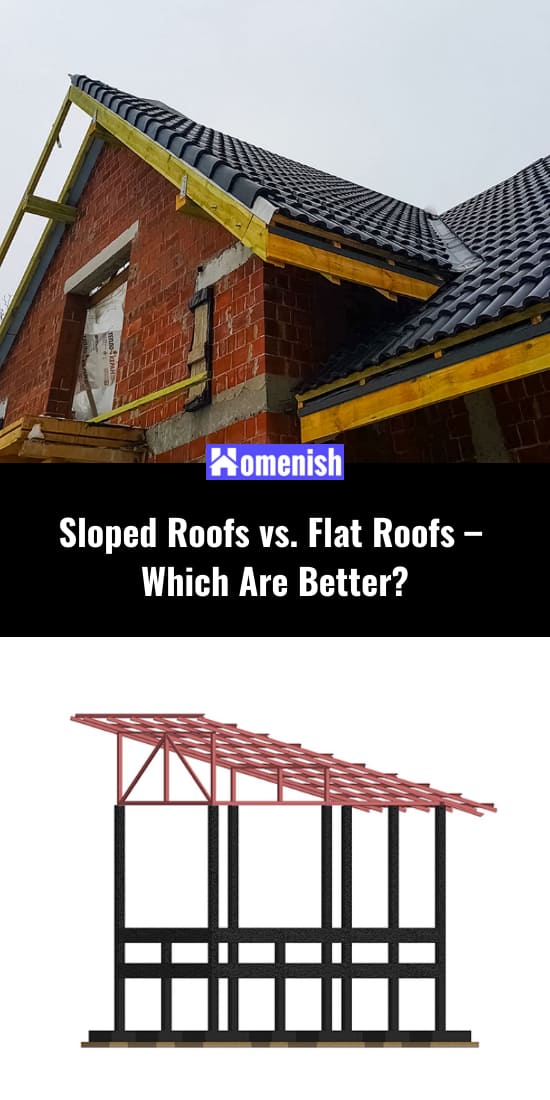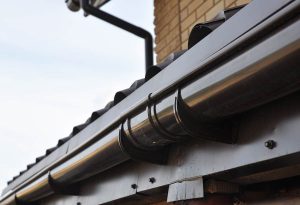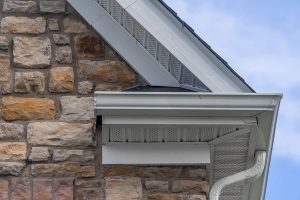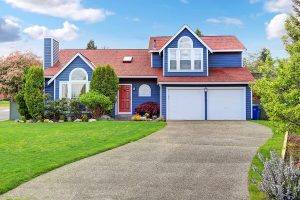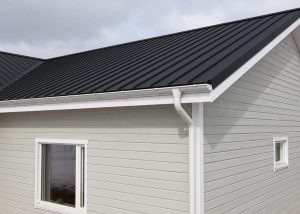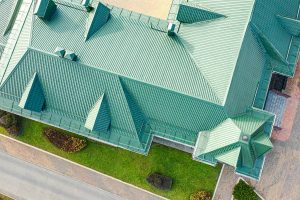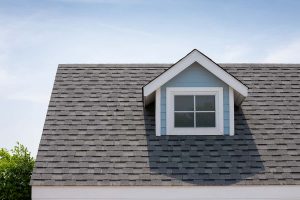Do you need a sloped roof on your house? How about on your barn or commercial building? Is the slope necessary for drainage, or can you accomplish the same thing with a flat roof?
In this post, we’re talking about the differences between a flat and sloped roof, the pros and cons of a sloped roof, and the different types of slope styles you could choose.
The Ongoing Debate of Sloped vs. Flat Roofs
Originally, any roof in an area that saw rain or snow on a regular basis was sloped. Even basic huts were sloped to let the rain and snow run off. The exception was desert buildings, where people didn’t have to worry about rain and snow piling up on their roofs. You can still see this distinction today. In Europe, the US, and Asia, where we get a lot of precipitation, most roofs are pitched. In the Middle East, you see a lot of flat roofs.
Then, in the middle of the 19th century, Europeans began building flat roofs covered in tar. There was still a slight slope to the roof that ran to a drain, but overall, the flat design was a lot cheaper to build. You could build a tall building without the need to add any extra trusses or other structural supports for a high, sloped roof. Plus, the surface area of the roof was lower, so you saved on finishing material for the roof.
Of course, the flat roof wasn’t as stylish, so it was used more on utilitarian buildings and homes built on a lower budget. New York City saw a lot of flat-roofed buildings popping up during this time. Storefronts, factories, apartment buildings, and low-cost housing all featured flat roofs. One advantage for residents was that the flat roof provided a deck to walk out into the open air and enjoy the view of the city, a place to hang out your laundry or grow plants, and an area for the city to build water towers. Plus, flat roofs were a smart design for city life because they didn’t spill snow and rain onto the sidewalk below.
The flat roof became so much a symbol of big city life that people in other parts of the country began disguising their sloped roofs to look flat! Rather than saving money, they spent money to build false fronts on their houses and buildings.
Sloped roofs came back into style when asphalt shingles were invented, and it became cheaper to cover a roof in shingles than the tiles and boards they had been using for sloped roofs previously. Asphalt shingles are still the cheapest way to cover a pitched roof, but there are plenty of other materials to choose from as well.
Today, flat roofs are used mostly on businesses, office buildings, and high apartment buildings as a way to stay under height limits in large cities and save building costs, while standalone homes are generally built with some style of a sloped roof.
Pros and Cons of Flat vs. Sloped Roofs
How do flat roofs stack up to sloped roofs in modern architecture?
Building Materials for the Roof
Today, most flat roofs are finished with rubber. This is very strong and waterproof. It’s also very easy to patch if you do have a problem with the roof.
Sloped roofs have multiple layers, including plywood, underlayment, and whatever type of finishing material you want to use: shingles, wood shakes, tiles, metal panels, etc. All of these materials are quite durable when installed and maintained properly.
Verdict: Both flat and sloped roof building materials are strong and durable enough for use in rainy and snowy climates.
Wind-Resistance of the Shape of the Roof
Besides precipitation, the element that will pose the most threat to your roof is wind. Sloped roofs are designed to be aerodynamic, allowing the wind to ride up and pass over the slope of the roof. This does depend, however, somewhat on the direction of the wind and the style of the slope. Wind can still “grab” a sloped roof from underneath. Besides the shape, you also have the finishing material that is susceptible to wind. It’s very easy for shingles, in particular, to come loose in high winds.
A flat roof is aerodynamic because it presents no profile whatever. The wind passes straight over the roof.
Verdict: Flat roofs are less susceptible to wind damage.
Maintenance Needs of the Roof
No roof lasts forever, though metal comes close. A metal roof can last 50-100 years, depending on the type of metal you use. Still, you will need to perform maintenance to make any roof last. Both flat and sloped roofs require regular cleaning to maintain their look and keep the surface materials from reacting with the debris and degrading. In a sloped roof, you’ll also need to either replace broken shingles or recoat the surface to keep it protected. Besides metal, sloped roofs can last up to 30 years without replacement.
A flat roof, on the other hand, should be fully recoated every 10 years. In between, you’ll also need to patch the roof when it shows any signs of weak spots.
Verdict: Neither a sloped roof nor a flat is difficult or time-consuming to maintain, but a sloped roof will last longer than a flat roof.
Cost of Building or Replacing the Roof
Sloped roofs can be fairly inexpensive to build or replace, depending on the style of slope and the material you choose. Simpler roof designs with asphalt shingles are the most cost-effective. More complicated roofing structures with a copper roof would be the most expensive. Part of the increase in cost in building a sloped roof is simply the additional material needed to reach the peak of the roof, then angle it down across the length of the building.
A flat still costs less to build and replace because you’re not adding material for the slope. As we all know, the shortest distance between two points is a straight line, and a flat roof draws a straight line across the building. Plus, the rubber rolls used to finish a flat roof are still less expensive than asphalt shingles, not to mention the costlier materials you could use to finish a sloped roof.
Verdict: Flat roofs are less expensive than sloped roofs both to build and to replace.
Space Restrictions
A sloped roof works well when you have a lot of room on either side of your structure for the roof to overhang the building. It’s also not a problem when your building is low enough not to exceed height limits in your area.
Flat roofs are great for keeping buildings tight together because you don’t need any extra room for an overhang. In some cases, you can actually make the building wider because you don’t have to save room for the overhanging roof. You can also build up to the height limit with usable space. This is especially important in cities where you might want to build the tallest office building or apartment building as possible to maximize your rental income.
Verdict: Flat roofs are best for tight fits and maximizing space.
Visual Appeal
But now we get to the real advantage of sloped roofs, and this is the clincher for most homeowners. In fact, they won’t even consider a flat roof because it doesn’t look like a type of roof that belongs on a house.
The sloped roof gives your home visual appeal with an interesting architectural design. Even if it’s a simple sloped roof, it still tops the house in a more interesting manner than a sloped roof. The added benefit of sloped roofs, in general, is that there is a variety of styles to choose from to get just the look you want. Plus, you can choose the look of the roof by choosing your finishing material and color: shingles, shakes, tiles, metal panels, metal shingles, glass, etc.
A flat roof doesn’t necessarily look bad; it just looks plain. There’s no character to a flat roof and practically no customization. You get a flat roof covered in a plain material.
Verdict: Sloped roofs are more visually appealing and fit a wider array of architectural styles and visual aesthetics than a flat roof.
Should You Choose a Sloped Roof or Flat Roof?
As we’ve seen, the flat roof style has a lot going for it. It’s just as strong and waterproof as a sloped roof. It’s even more wind-resistant than a sloped roof. It’s easy to take care of and more cost-effective to build and replace. It allows you to maximize your space both vertically and horizontally.
But a flat roof can’t match the visual appeal of a sloped roof. Plus, you do have to recoat a flat roof more regularly than a sloped roof.
As most people would agree, if you’re building a commercial structure or apartment building, where cost-savings or maximizing your livable area is your main requirement, you can’t beat the economic sense of a flat roof. If, however, you’re building a home or other structure you want to be visually attractive, choose a sloped roof.
